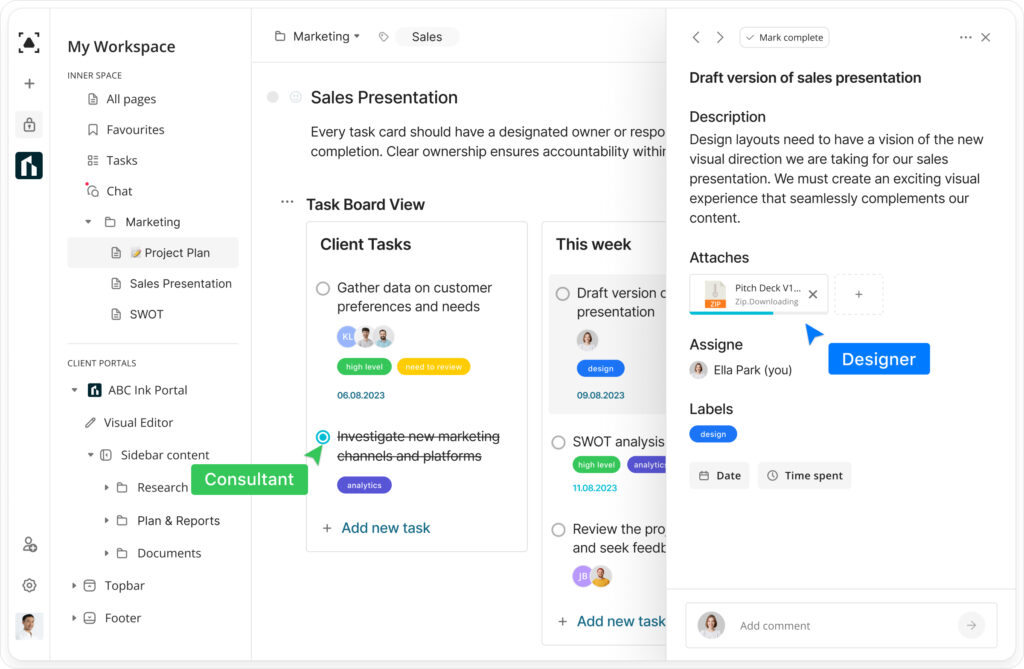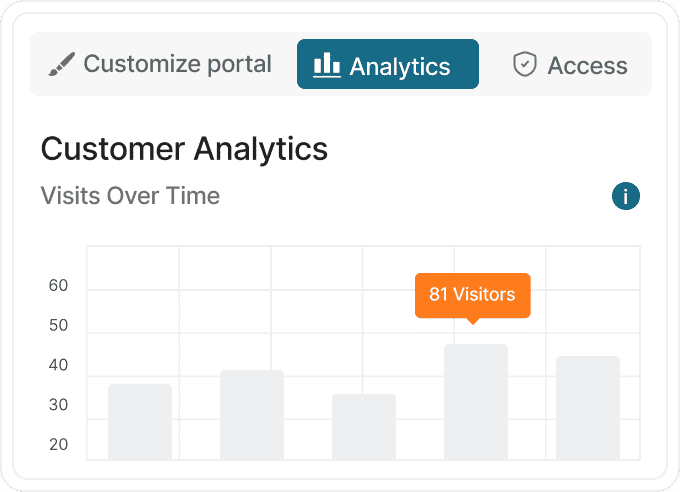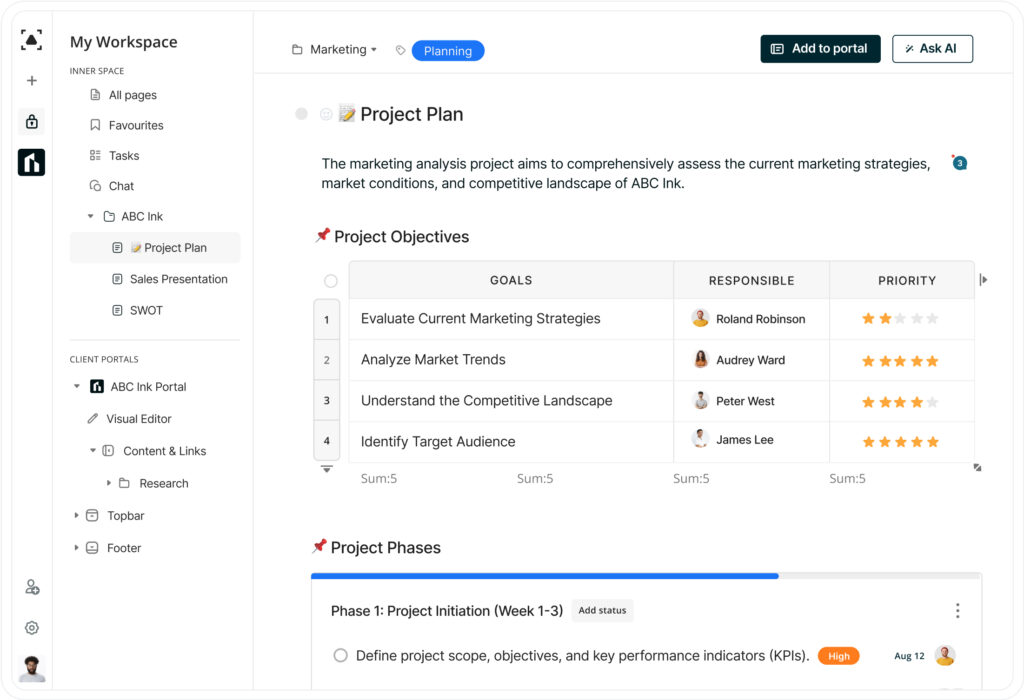
Onboarding vs. Implementation: Do You Need Both?
- 9 Min read
As the business world continues to evolve, scaling customer success has become essential for a company’s growth and stability. A successful enterprise relies on an organized customer-oriented process that is both scalable and technology-driven, as well as the implementation of specialized interactions and purposeful plans. To move through different stages of a business properly, one should consider these crucial factors to build long-lasting success with customers.
A solid customer success structure is fundamental for any business that wishes to expand. It serves as a plan and roadmap for the customer success team, aiding them in successfully handling client needs during their journey with your company. Guiding objectives and placing emphasis on customers who hold the highest value are of utmost importance. This framework provides an essential baseline of support that will help foster relationships between businesses and customers alike. Through this dynamic approach, it’s possible to prioritize those highly valued individuals while also granting long-term satisfaction from everyone involved – both sides benefit equally from such consistency!
When it comes to customer success, having a well-defined set of objectives is key. These goals serve as an anchor that keeps the customer success team and customer success managers oriented toward fulfilling company expectations and values. By establishing these end results, you are able to lay out the path for achievement in detail with clarity. Making sure all parties remain focused on attaining those targets throughout their journey together with customers.
Gaining an in-depth understanding of the customer journey map allows you to gain insights into what your customers are thinking. Their demands and anticipations become clear, helping you design success plans that have a personal touch. The whole experience from beginning to end can be seen as a storybook that aids in crafting victory scenarios for all those involved, delivering on their expectations every time.
To maximize customer success, identifying and assigning higher priority to high-value customers is essential. These valued clients are the real gems who bring in more engagement, greater spending amounts, as well as longer retention times. Their success directly correlates with yours! Focusing on these particular customers can help pave the way for your own company’s growth trajectory.
A customer success team, which is directed by a designated manager, forms an essential part of any successful customer operations. As your business expands, its reach and output grow accordingly. You must ensure that proper resources are employed to keep up with demand: namely, hiring staff such as managers who possess exceptional capabilities for this task, providing extensive training sessions for them and structuring customer success teams effectively so they can scale alongside your company’s progress. These three facets serve as an integral basis to build upon when constructing a thriving customer success organization or system.
When looking to hire for customer success positions, it is imperative that the individual has a growth mindset. Those who possess this mentality readily seek out learning opportunities and relish challenges presented by customers to improve processes overall, which leads directly to business expansion and development. This kind of proactive nature can be extremely beneficial when introducing them to your customer success team, as they are adept at incorporating their growth-orientated ideologies throughout.
An effective customer success team functions much like a meticulously tuned machine, running smoothly and proficiently within the department of customer success. For this machinery to function optimally, training is essential. It endows staff with all they need in terms of knowledge and skills for managing their duties regarding client relations.
Providing comprehensive instruction sets an efficient roadmap towards achieving great results, equipping personnel to offer outstanding service whilst also bolstering strong bonds between customers and members of the customer success team itself.

Making the most of available resources is a key part of getting customer success teams and customer success managers to perform optimally. Arranging customer success team members accordingly and making sure everyone has appropriate responsibilities allows them to concentrate on proactive approaches that make for an unparalleled experience with customers. Segregating from standard customer service activities also serves as a way to help the customer success team reach peak performance levels when dealing with consumer relations.
As the business expands, leveraging technology to improve customer satisfaction is becoming increasingly important. Automation tools and customer success management are being integrated into processes to keep up with rising numbers of customers for more efficient outcomes. By analyzing data, businesses can gain a better understanding of how best to support their customers going forward.
By focusing on integrating these various elements together, it’s possible not only to improve operations but also to provide invaluable insights that contribute to long-term customer success as well – something essential in today’s competitive climate where retaining loyal consumers has become paramount.
Customer success can be improved with automated team collaboration tools, which use speed and accuracy to enhance engagement, manage renewals efficiently and generate notifications depending on customer activity, like customer feedback.
Thanks to these automated processes, your customer success manager, customer success department and customer success team are able to focus more energy on more strategic initiatives that ultimately ensure customers are satisfied with their experiences. This, in turn, creates an environment of satisfaction for both the clientele as well as those working behind the scenes.
Customer success platforms serve as the nucleus of your customer success initiatives, such as customer feedback, enabling you to have a comprehensive look at all aspects of each individual customer. These systems not only make operations more efficient but also provide resources for personalizing service and surpassing expectations. By tracking interactions, evaluating health scores and providing relevant analytics, they empower and effectively scale customer success teams, customer success managers and customer success departments to effectively manage their customers’ satisfaction levels to achieve outstanding results.

Customer data offers insight into the behavior and desires of your customers. Looking into this information allows you to uncover trends, patterns or areas for improvement, granting a better understanding of who your customers are, which can then be used to develop approaches tailored specifically to their wants and needs.
As companies increase in size and deal with more customers, personalizing customer interactions across the board becomes a daunting task. Segmenting customers into different categories provides an effective way to cater to experiences that match their needs on a larger scale. This is accomplished by developing systematic approaches for organizations as well as providing consumers with self-service options, which bring about additional satisfaction when it comes to handling customer relations effectively. The incorporation of these strategies allows businesses to maximize their overall relationship between them and the customer feedback while keeping each individual’s experience unique yet repeatable at its core.
Organizing your customer base is just like hosting a party. It should be inviting and understood by all. Through segmentation, you can tailor various strategies for different groups of customers based on criteria such as growth potential, product usage and revenue prospects, which will not only make them feel appreciated but also increase possible returns.
Forming effective processes is comparable to crafting a cake with an established formula. You understand exactly what ingredients should go in, the order in which they must be included and what results will result from it all. These repeatable systems secure consistency of successful customer outcomes even when your clientele broadens.
They also provide leeway for the customer success team to mechanize mundane jobs. Giving them room for more automation technology rather than being involved in non-strategic matters concerning customers’ success.
Providing self-service options to customers gives them the tools they need to solve problems and inquiries on their own. Not only is this beneficial from a customer satisfaction standpoint, but it also provides an advantage to your customer success team handling customer success overall. Whether it’s access to FAQs or other helpful knowledge bases, empowering customers through independent assistance is advantageous for all parties involved.
As your organization expands, you must concentrate on strategic plans that guarantee long-term success. This includes concentrating resources on business growth, aligning objectives with those of the sales team and emphasizing retention rather than acquisition.
To discuss these important initiatives in more detail, let us take a closer look at them. Investing in managing customer relationships plays an integral role for businesses as they grow. It is equally essential to ensure both goals between the company’s strategies and those set by their sales team are aligned.
Nurturing business development is like planting a tree. It needs time and attention, but the results are worthwhile. Expanding your customer segment as well as creating new sources of income with solid customer relationships can sustainably contribute to long-term success for businesses.
Scale customer success and sales team objectives need to work hand-in-hand like a duet, coming together in harmony for the benefit of increasing customer loyalty and progress. This close relationship is essential if companies want to create sustainable advancement through unified action that pleases both their customers and themselves.
Retention should be the primary focus for businesses, much like tending to a garden. Taking good care of customers who are already part of the base ensures they remain loyal. This strategy not only boosts revenue but also cultivates an efficient customer pool with existing clients at its core. Looking after your customers can guarantee their continued patronage.

As your customer base expands, it’s important to adjust and develop effective strategies for success. Three essential phases of business growth exist: startup, expansion and enterprise level. Each offers its own distinct opportunities and challenges that must be conquered.
Let’s take a closer look at how we can navigate these stages with our customers in mind, understanding what they need so businesses may reach their fullest potential.
The beginning of a venture, or startup phase, can be seen as the initial steps on a journey. At this stage, it’s important to become familiar with the processes in place and study what customers want so you have an effective customer success strategy that can bring early satisfaction to clients with their customer experience. To ensure long-term triumph, factor their feedback into your plan accordingly.
As your business undergoes growth, it is essential to effectively scale customer success operations. This requires extending the size of the customer support team, honing training plans and optimizing staff arrangements.
Increasing capacity at this stage will make sure customers get quality service while you are able to grow their number and effectively advance in scaling customer success for each client.
Scale customer success is a major factor when it comes to the enterprise phase. One must look at their strategies and find ways of tackling these unique challenges effectively to have successful outcomes. To do this, you should consider factors such as managing an extensive customer base, scaling up resources relative to the growth rate of customers involved and understanding complex organizational structures and hierarchies that come along with serving large-scale operations. By adjusting your approach accordingly for such predicaments, you can help ensure positive results in customer satisfaction levels and revenue growth throughout the entire enterprise stage.

FuseBase: the answer to the prayer, a leading client portal software, is pivotal in scaling customer success and positive customer experience for growing businesses. It provides a robust framework for customer-oriented processes, aligning team actions with company objectives. With clear goals, understanding the customer journey and prioritizing the ultimate goal, FuseBase ensures an organized approach. The platform also supports efficiently scaling customer success teams, emphasizing the importance of hiring individuals with a growth mindset, offering excellent training and structuring teams for efficiency.
FuseBase incorporates automation tools and scale customer success management to enhance operations, personalize interactions at scale and focus on the customer’s journey for long-term retention. By analyzing customer data, providing self-service options and aligning objectives with sales goals, FuseBase empowers businesses to navigate different growth phases successfully. With its comprehensive features, FuseBase proves to be an essential tool for sustaining, enhancing and scaling customer success for new customers and existing customers in evolving business landscapes.
Increase customer success and grow your business with FuseBase!
To efficiently scale customer success in a developing business, one must create an effective structure, automate processes, assemble and cultivate a flexible team, utilize technology purposefully when engaging customers on personal levels and work towards established goals for the company across various stages of its evolution. These strategies are essential if you want your organization’s growth to be sustained through successful customer experiences.
To scale a customer success squad, it is key to implement training specifically tailored for this job and review the existing processes. Also, focus on repeatable actions and make sure the technological support utilized makes sense. Finally, build up or add more content into an information hub and onboarding process. These steps will help you increase your team without decreasing its quality of work. Emphasizing both customer success elements here helps maintain a high standard while expanding outwards quickly too!
Maximizing customer value is key to successful revenue growth. This means having an efficient system in place to balance high-touch engagement with low-touch efficiency when managing existing customer relationships and creating new ones, all while keeping costs under control.
Scaling customer success is key to gaining insight into how satisfied customers are with their experience. Using metrics such as Customer Lifetime Value, Repeat Purchase Rate, Retention Rate, Churn Rate, Net Promoter Score and Customer Satisfaction Score can help track this data to monitor the loyalty of your consumers.
Having a well-defined customer success strategy is essential for driving successful outcomes. This requires setting clear objectives, developing an in-depth comprehension of the customer experience for new customers and existing customers and concentrating on those who have more potential value to offer. Focusing on these points will help ensure all your customers are satisfied with their entire customer journey.
Technology can greatly scale customer success by integrating automation tools, employing customer success platforms and analyzing data related to customers. By leveraging these technological advances, it’s easier for companies to understand their clients’ needs and meet them more effectively. Utilizing the available technologies allows organizations access to crucial customer information which can be used to best serve their clientele.
Found it useful? Share the article with your community
Get weekly tips and insights on how to grow your business